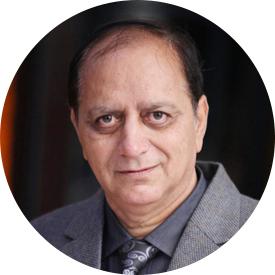
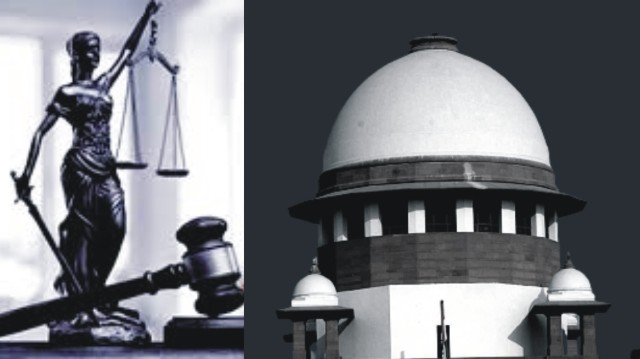
“To think that you will get relief from the Supreme Court, you are gravely mistaken.” – Kapil Sibal (Senior Advocate)
The above assertion of the senior advocate in relation to the dispensation of justice by the Supreme Court is not only awfully agonizing but also decidedly disturbing.
The person, credited with more than fifty years of Supreme Court practice has shared his said experience i.e. tryst with justice and that too with the Apex Court of the India, poised to act as the guardian of the 1.4 billion population.
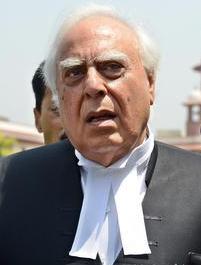
This indeed is supremely alarming and merits to be examined in depth in order to contain the faith of the justice seekers in the scheme of justice enshrined in the most envious constitution of India.
It is difficult to reckon the sweeping statement that the Supreme Court has not imparted justice in the last fifty years. However, the assertion cannot be swept under a rug and calls for intense introspection at the end of Supreme Court itself.
The counter statement of the law minister Kiren Rijiju that “For the congress and their like-minded people, courts or any constitutional authority must favour them or work according to their interests. When, they give a decree or judgment against their mindset, they start attacking the constitutional authority itself”.
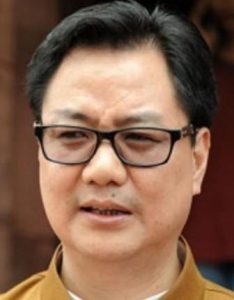
The answer to the statements of Kapil Sibal and law minister Rijiju indeed rests in locating the judicial ideology of the particular judge/judges in reference to the judgment under legal analysis.
The above mentioned statement by the law minister cannot be construed to be bereft of any substance.
The judges of the Supreme Court are under constitutional obligation to dispense justice in accordance with the law and with the total allegiance to the constitutional oath which they have taken.
The author being in regular practice is appearing before the various constitutional courts including the Supreme Court, recently highlighted on the subject through an article that why the justice has become inaccessible in the Supreme Court under the caption “Indian Judicial System Precariously Poised: The Era Of Pedigreed and Prominent”.
Joshua B. Fischman, Associate Professor of law, University of Virginia and David S. Law, Professor of law and Professor of Science, Washington University have done the industrious work on the issue of judicial ideology of a judge in relation to the judgment, under the caption “What is judicial ideology, and How should we measure it”. The Article lucidly observed that:
“First, ideology is not a tangible phenomenon that can be directly observed. Second, judicial behavior is often open to multiple interpretations. Third, judicial ideology may be a multidimensional phenomenon, such that a judge who is liberal in one context may be moderate or conservative in another, or the labels “liberal,” “moderate,” and “conservative” may not seem applicable at all.
They have aimed instead to measure the extent to which judges behave in a way that appears motivated by preference or beliefs of an ideological character. Yet this orientation of the literature toward observable behavior, as opposed to unobservable states of mind, still begs the question of what it means for a judge to behave “ideologically.”
The idea that “politics” and “ideology” are synonymous, and that “law” and “ideology” are opposites, forms the basis of the theoretical framework articulated by Professors Segal and Spaeth, who assign explanations of judicial decision-making to one of three models: the “legal model,” the “attitudinal model,” and the “strategic” or “rational choice model.”
As they use the term, ideology refers simply to the political leanings of the Justices. What they call the “legal model,” by contrast, depicts judicial decision-making as the product of the interplay of law and fact.
Different audiences may interpret the term differently. It thus behooves scholars to specify as clearly as possible what they are choosing to study.
Problems of definition breed problems of measurement. We cannot know what data we must collect, and what methods we should apply, if we do not first specify what it is that we are attempting to measure.
If scholars do not know what they mean by “ideology,” they cannot hope to select the most appropriate way to measure it. Likewise, if scholars fail to specify what they mean by ideology, it becomes impossible for the audience to judge the appropriateness of the measures used.
In either case, it may not be necessary to impute motivations to the judge at all. Is the goal instead to measure the ideology of the judge? If so, it will be necessary to define “ideology.” Or is the goal not only to measure the judge’s ideology, but also the extent to which that ideology influences the judge’s decision-making?”
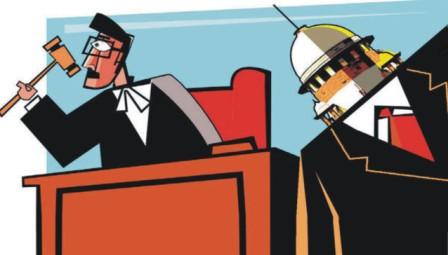 The individual ideology of the judge should not occupy any place in the judgment. Rather, the judgment in all circumstances without the least deviation ought to be based on the constitutional ideology. This in every sense of the word would be a real tribute to the constitutional oath and would strengthen the justice delivery system.
The individual ideology of the judge should not occupy any place in the judgment. Rather, the judgment in all circumstances without the least deviation ought to be based on the constitutional ideology. This in every sense of the word would be a real tribute to the constitutional oath and would strengthen the justice delivery system.
It cannot be refuted that at the level of the Supreme Court the consistency in terms of the law for dispensation of justice with notable exceptions has bygone.
The Supreme Court has observed and adhered various times to the time worn cliché “we are not final because we are infallible, but we are infallible only because we are final”. The underlined meaning of the above phrase presently to a good extent has evaporated beyond any sight; the same does not augur well for the strongest pillar of the democracy.
It would not be out of context to remember as to what has occurred in the Supreme Court during the course of the hearing of the first petition of BJPs suspended spokesperson for transfer of investigation of all the FIRs registered at different places to Delhi, where the first FIR was registered.
The Supreme Court did not agree to the desired relief in complete contravention of the law and the petition was permitted to be withdrawn. Reference T.T. Anthony V/s State of Kerala (2001) 6 SCC 181
Post lapse of a very short time span, the somersault is seen while hearing the second petition on the same set of facts.
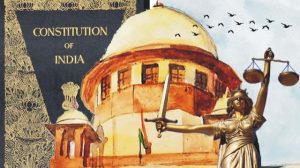 Indubitably, the Supreme Court while hearing the first petition has not only transgressed the contours of law but also made remarks which were not in tune with the subject in hand.
Indubitably, the Supreme Court while hearing the first petition has not only transgressed the contours of law but also made remarks which were not in tune with the subject in hand.
It caused a stir in the society and media took-up the cudgels to intellectually assassinate the particular judges.
This too was not good to attribute any motive to the judges but at the same time, the judges should have restrained themselves while crossing the deadline defined under the law and at the top of that the constitutional oath to deliver justice in accordance with the law.
Again, it is legally and procedurally untenable as to under what circumstances the second petition was entertained and allowed too, although rightly. And whether, this has not given a complete adieu to the well settled proposition of law?
It is the settled proposition of law that after the dismissal of the SLP, if the litigant is aggrieved and there exists ground for review, would follow the course provided under Article 137 of the Constitution of India.
And in the event of dismissal of the Review Petition, the curative petition would be filed in consonance with the ratio laid down in the judgment of ‘Rupa Ashok Hurra, (2002) 4 SCC 388’. The procedure laid down was sidelined while adjudicating the second petition.
However, all is not lost yet, the Supreme Court must take cognizance of the circumstances and do utmost to maintain consistency which in turn would restore the faith of Public in our scheme of justice.
Parallelly, the uncalled-for intrusion or attribution of motive to Judges would directly and indirectly weaken the strength of justice delivery system. The institute would also be deprived of the talented Judges. Their absence would indeed be potent to wreak havoc with the most enviable scheme of dispensation of justice. ![]()
____________
Also Read:
Centre’s Opaque Auction Rules For Pulses Rip Off Govt Coffers, Help Millers Strike Rich
Need to amend laws like UAPA to provide for punishment for those who slap false cases
Global Arms Trade: Who are the real winners?
Why not 40 pc tickets for women in Punjab and elsewhere?
Punjab – How a deadly cocktail of Agri-Water-Energy nexus going to destroy it?
North Pole and the ideological conflict of RSS & Hindutva
Politics of Symbolism: Dalit Chief Ministers in India

Disclaimer : PunjabTodayTV.com and other platforms of the Punjab Today group strive to include views and opinions from across the entire spectrum, but by no means do we agree with everything we publish. Our efforts and editorial choices consistently underscore our authors’ right to the freedom of speech. However, it should be clear to all readers that individual authors are responsible for the information, ideas or opinions in their articles, and very often, these do not reflect the views of PunjabTodayTV.com or other platforms of the group. Punjab Today does not assume any responsibility or liability for the views of authors whose work appears here.
Punjab Today believes in serious, engaging, narrative journalism at a time when mainstream media houses seem to have given up on long-form writing and news television has blurred or altogether erased the lines between news and slapstick entertainment. We at Punjab Today believe that readers such as yourself appreciate cerebral journalism, and would like you to hold us against the best international industry standards. Brickbats are welcome even more than bouquets, though an occasional pat on the back is always encouraging. Good journalism can be a lifeline in these uncertain times worldwide. You can support us in myriad ways. To begin with, by spreading word about us and forwarding this reportage. Stay engaged.
— Team PT


Copyright © Punjab Today TV : All right Reserve 2016 - 2024 |